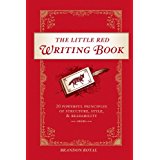Blog to Become the JND

It’s a term from the field of psychology, but the concept is one to which we blog content writers can certainly relate. The JND (just noticeable difference) is the minimum level of stimulation that is needed for a person to detect it, at least 50 percent of the time. For example, if you were asked to hold two objects of different weights, the just noticeable difference would be the minimum weight difference between the two that you could sense half of the time. The just noticeable difference applies to a wide variety of senses including touch, taste, smell, hearing, and sight, explains Kendra Cherry in verywellmind.com. If an experimenter were to slowly add tiny amounts of sand to one of your hands, asking you to say when you notice that one hand feels heavier than the other, that would reveal your JND.
“It’s best to think about who your prospective leads are online and what they might want to read, before sitting down to write a blog post,” Campaign Creators advise. The JND will be the precise point will online readers notice that their needs are being addressed and that the information you’re offering is relevant to their search. According to Internet Live Stats, there are around 5.5 billion Google searches per day or more than 63,000 search queries per second. With such an ocean of material available on the internet on every conceivable topic, at what point will your prospect undergo that minimum level of stimulation need to command her attention?
Always on the alert for ways to convey marketing messages through corporate blog content writing, I couldn’t help recalling Jeffrey Hayzlett’s advice in Success Magazine about grabbing the attention of would-be customers: “Aim for speed and immediate relevance”. There can be no “relevance”, blog content writers need to understand, until and unless the reader experiences JND.
To help that process, I teach Indianapolis blog writers to address five “why’s”:
- why YOU (the reader)
- why ME (the blogger)
- why THIS (the offer)
- why now (the urgency)
- why this price (the value).
Blog to help the Just Noticeable Different happen!



Follow us online!